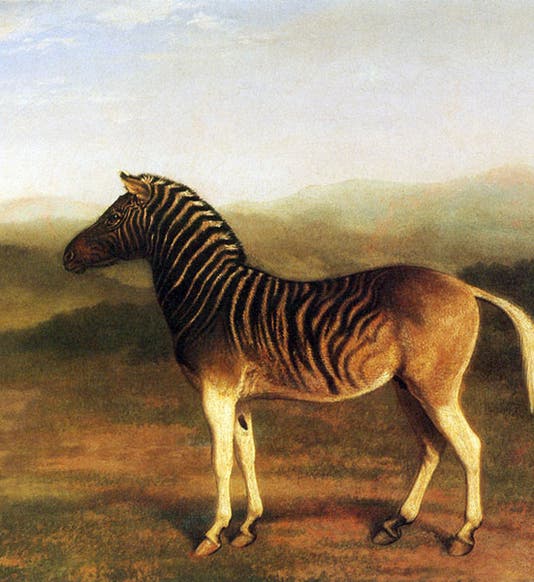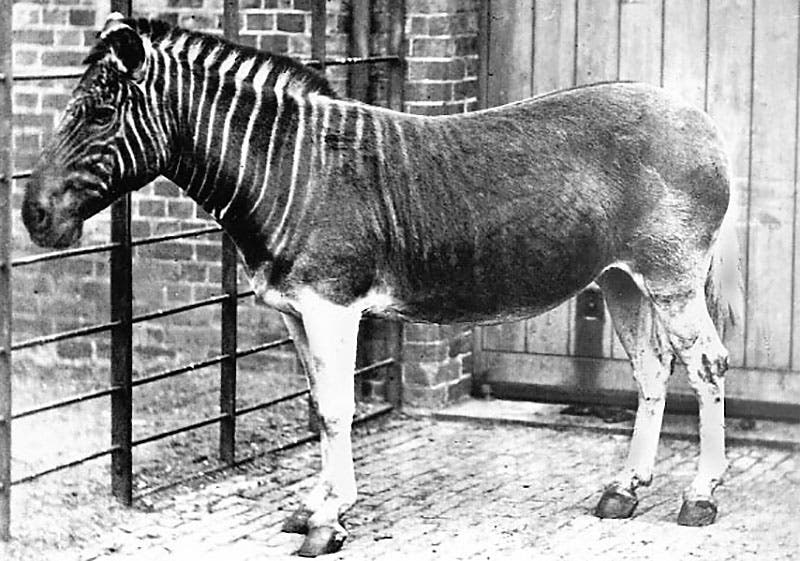Scientist of the Day - George Douglas
George Douglas, the 16th Earl of Morton and a Scottish gentleman scientist, was born Apr. 3, 1761. No doubt because he was wealthy and upper class, Douglas was elected a Fellow of the Royal Society of London when he was just 24 years old, and he was subsequently admitted to the Royal Society of Edinburgh. He served as occasional vice president of the Royal Society during the presidency of Joseph Banks, which ended in 1820. Douglas made his one contribution to science, for better or worse, with a paper that he read to the Royal Society of London in 1820 and that was published in their Philosophical Transactions in 1821. It was called: "A communication of a singular Fact in Natural History". Singular, it certainly was. In his very brief note, Douglas recounted a horse-breeding experiment that he had performed five years earlier, in which he had attempted to breed a female chestnut horse to a male quagga. Quaggas were relatives of zebras from southernmost Africa, brown rather than black, with white stripes on their forebodies and few to no stripes on their hindquarters or forelegs. That union had produced a hybrid and sterile offspring, but that wasn’t the “singular fact.” The Earl had later sold the chestnut mare to a friend, who bred the mare to a black Arabian stallion, and two of the foals from that mating had markings that resembled those of a quagga, with hair on their manes that stood straight up just like the mane of a quagga. This was the singular fact that Douglas had observed just the previous day. It would seem that the imprint of the quagga had persisted in the mare and produced a ghostly remnant of quagga coloring and traits in a subsequent and unrelated generation. Or so Douglas claimed. This was one of the biggest monkey-wrenches ever thrown into the chop-shop of 19th-century genetics. The experiment was often cited in subsequent discussions of breeding, and many theories were proposed to explain the reappearance of traits in a later generation from a previous mating. Even Darwin wondered about the matter, citing the Douglas paper in his Notebooks (1837), his Big Book (the forerunner to the Origin of Species, ca 1856), and his Variation under Domestication (1868), as an example of the many mysteries of genetics remaining to be solved. The solution should have been to throw out the entire tale as unfounded, and eventually it would be. But in the 1850s, who knew? Gregor Mendel lay in the near future and the development of Mendelian genetics in the far future. Jim Enderby began his delightful history of genetics, A Guinea Pig's History of Biology (2007), with the story of the Earl and the quagga, where you can learn more about the Earl and the way his story embodies the problems faced by early investigators into the nature of inheritance.
Quaggas disappeared from the face of the Earth in 1883, on Aug. 12, when the last living specimen died in the Amsterdam zoo, one of the few species, like the passenger pigeon and the Carolina parakeet, whose extinction can be precisely dated. The last quagga was neither photographed nor preserved, but there survives a photo of another, perhaps the penultimate survivor, who lived and died in the Regent’s Park zoo in London in the 1870s (second image). Dr. William B. Ashworth, Jr., Consultant for the History of Science, Linda Hall Library and Associate Professor emeritus, Department of History, University of Missouri-Kansas City. Comments or corrections are welcome; please direct to ashworthw@umkc.edu.







